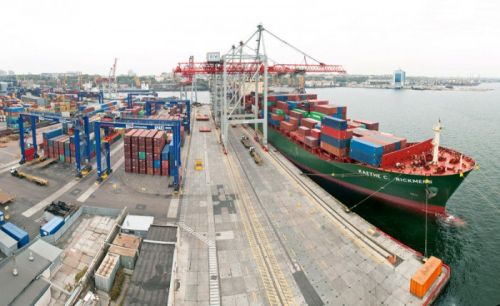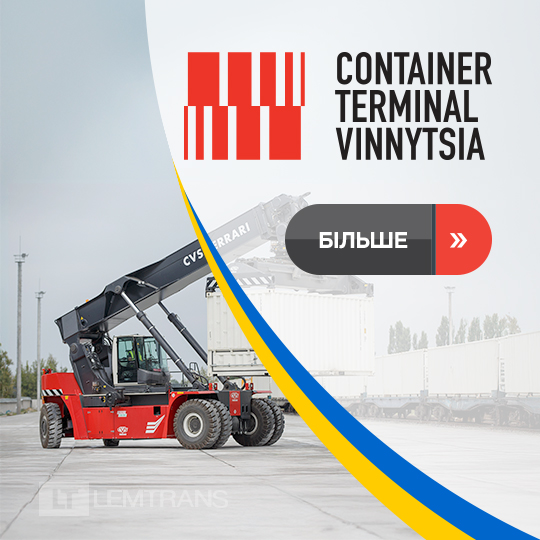When "the special operations" began in February 2022, almost all the container lines had stopped their port calls to Odessa and Chornomorsk due to their safety concerns. Then they also suspended their services to and from Russian ports indefinitely, presenting it as a collective stance by the business community against the inhumane actions that cost thousands of lives in Ukraine.
Afterwards of their sugar-coated and publicly praised actions, almost all the major container lines resumed their services to Russian ports through their proxies by newly established shipping companies that nobody had heard of before. Small-to-medium-sized container lines filled the market with different names and shadowed ownership information. Brands did not even bother changing their corporate colours, logo types, and in some examples, emails. Very noble behaviour, indeed.
But my main interest is why those big ones that were waving flags of Ukraine, manifesting their sincere and positive approach to the Ukrainian economy in every interview, after each summit in the past, at the first occasion backed off, despite the reimplementation of nearly all safety regulations to Ukrainian ports? Why do shipping giants still keep delivering to Yemen and Israel? Are they not risk zones?
Major shipping lines continue regular services to ports in the Red Sea region, where Houthi attacks resulted in over 100 incidents affecting commercial vessels in 2023-2024, the Persian Gulf, and various African ports despite ongoing security challenges. Insurance premiums for Red Sea transits increased by 300-500%, yet services continued.
Major maritime insurers have begun offering coverage for Ukrainian port calls at rates only marginally higher than standard Black Sea premiums — a stark contrast to the 300-500% increases seen for Red Sea transits. War risk insurance for Ukrainian ports currently adds approximately $50,000-75,000 per voyage, compared to $200,000-300,000 for certain Middle Eastern routes where major carriers continue to operate over a hundred weekly container ship calls.
The International Maritime Organization and European Maritime Safety Agency have both issued updated guidance confirming that Ukrainian ports meet international safety standards for commercial operations. The European Union's inclusion of Ukrainian ports in its TEN-T network expansion plans, backed by €7.4 billion in committed infrastructure investment through 2030, signals transformative institutional support for maritime development.
The answer lies not in genuine safety concerns but in the cold calculus of boardroom-level decision-making and profit margins. The major carriers fear potential backlash from shareholders, insurers, and global collaborators more than they value the substantial revenue opportunities that Ukrainian trade represents.
This strategic withdrawal reveals the shipping industry's true priorities. Ukraine's pre-2022 container throughput reached approximately 850,000 TEU annually across its major ports. But the Big Three (Maersk, MSC, and CMA CGM) prefer the perceived safety of established trade routes. They've effectively abandoned one of Europe's most strategically important maritime corridors, leaving Ukrainian exporters dependent on costly overland alternatives through Poland, Romania, and the Danube River system, which cost 40-60% more per ton than direct maritime shipping.
Ukrainian port authorities have invested heavily in security infrastructure, implementing NATO-standard safety protocols and maintaining 24/7 coordination with international maritime security agencies. The ports of Chornomorsk and Odesa have demonstrated their operational readiness through successful grain corridor operations, having facilitated over 33 million tons of agricultural exports since the Black Sea Grain Initiative's implementation. Current port capacity utilization stands at merely 15-20% of pre-2022 levels, despite maintaining 85% of operational infrastructure.
The technical infrastructure remains largely intact, with modern container handling equipment and deep-water berths capable of accommodating vessels up to 200,000 DWT. Ukrainian port workers, renowned for their efficiency and expertise, achieved the impressive pre-war pace of 25-30 container moves per hour, competitive with major European ports. The missing element is not capacity or capability — it's the willingness to stand up and lead.
This strategic abandonment carries implications far beyond immediate profit calculations. Ukraine's pre-war trade volume reached $84 billion annually, with maritime transport accounting for approximately 60% of this figure. Ukraine's integration into European supply chains depends heavily on reliable maritime connections. By maintaining their absence, major carriers effectively impede Ukraine's economic recovery and its deeper integration into global trade networks.
The transportation industry has historically prided itself on connecting global markets regardless of political challenges. Major shipping lines built their reputations by maintaining services to destinations others deemed too risky. Their current approach to Ukrainian ports represents a departure from this tradition and raises questions about their commitment to free global trade.
While major global carriers hesitate, regional players and smaller lines are quietly positioning themselves to capture Ukraine's extraordinary maritime potential. Middle Eastern carriers, including those from the UAE and Qatar, have shown increasing interest in Ukrainian routes, with preliminary agreements for 15-20 weekly services once full operations resume. Even some Chinese state-owned enterprises are exploring opportunities through third-party arrangements, understanding that Ukraine's reconstruction will create decades of unprecedented shipping demand.
This shifting dynamic presents a critical paradox for the Big Three: their conservative approach may preserve short-term stability, but it simultaneously creates space for competitors to establish footholds in what industry analysts project will become a $4-5 billion annual maritime market by 2030. Ukraine's strategic position connecting European, Asian, and Middle Eastern trade corridors positions its ports to handle an estimated 2.5-3 million TEU annually within the next decade, nearly triple pre-war volumes.
History shows that post-conflict reconstruction phases often reshape entire industries, and shipping is no exception. Companies that enter early typically secure long-term exclusive partnerships, preferential rates, and strategic port allocations that become nearly impossible for latecomers to match.
The time for excuses and proxy arrangements has passed. If major container lines genuinely support Ukrainian recovery, they must demonstrate this commitment through direct action, not public statements. Until then, their Ukrainian port absence remains an indictment of an industry that has chosen comfort over courage when courage was needed most.
For carriers seeking to position themselves in Ukraine's spectacular post-war economic transformation, the message is crystal clear: you must step forward now, not tomorrow. Ukraine's maritime sector is poised for unprecedented growth, with government projections indicating port throughput will reach 4.2 million TEU by 2035, five times pre-war levels. The country's planned deep-water port expansion at Yuzhny alone will add capacity for 1.8 million TEU annually, while Odesa's planned terminal automation will increase efficiency by 40-50%. Early movers will secure preferential partnerships, prime berth allocations, and lasting business deals that will define the next two decades of Ukrainian trade.
Ukraine's recovery represents one of Europe's most magnificent post-conflict reconstruction opportunities, with maritime infrastructure investments alone expected to generate 15,000 direct jobs and contribute €2.1 billion annually to the regional economy by 2032. The country's strategic position will make it the gateway for an estimated €85 billion in annual trade flows between Europe and Asia within the next decade.
The maritime industry's leaders must decide whether they want to be architects of this historic revival or mere observers watching others claim the extraordinary rewards of courage and foresight in what will become the Black Sea's most advanced and profitable port network.


